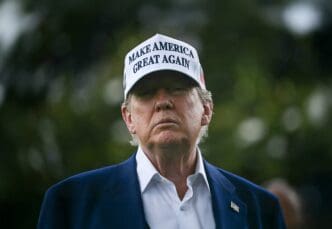Executive Summary
The Story So Far
Why This Matters
Who Thinks What?
Since President Donald Trump’s re-entry into the White House, the stock market has experienced significant volatility, influenced by his unpredictable policies, including tariffs and substantial spending bills. As investors and analysts attempt to forecast future market movements, historical data regarding stock performance during presidential terms offers some context, particularly for 2026, the second year of Trump’s current tenure.
Historical Market Performance Under Presidents
Market strategists often examine historical trends in an attempt to glean insights into future performance, though past data does not guarantee future results. Research from Charles Schwab indicates average returns for the S&P 500 index across different years of a presidential term.
Historically, the first year of a presidential term has seen an average S&P 500 return of 6.7%. The second year averages 3.3%, while the third year shows the strongest performance at 13.5%. The fourth year typically yields an average return of 7.5%.
Theories on Presidential Term Cycles
These historical patterns have led to theories such as that proposed by researcher Yale Hirsch. Hirsch suggested that presidents are more likely to encounter challenges like wars, economic downturns, and bear markets during the first half of their term. The second year, in particular, often leads to increased volatility, partly due to upcoming midterm elections.
The article notes that if these historical trends were to hold, 2026, as the second year of President Trump’s term, could present a challenging period for the stock market. Hirsch’s theory also posits that the market’s performance strengthens in the latter half of a presidential term as there is often a greater focus on re-election and economy-stimulating policies. However, President Trump is not eligible to run for re-election in this context.
Impact of Trump’s Policies and Broader Economic Factors
President Trump’s decision to pursue tariffs in 2025 has contributed to market swings, with trade news continuing to influence investor sentiment. Conversely, a large spending package passed by Congress, which made some of Trump’s first-term tax cuts permanent and introduced other temporary cuts, could serve as a tailwind for the economy.
Beyond specific policies, the market faces numerous other factors, including the trajectory of inflation, the potential for an economic downturn marked by weakening consumer spending and softer labor markets, and elevated stock valuations. Concerns also persist regarding the artificial intelligence boom and whether it represents a market bubble.
The Challenge of Market Timing
Despite historical patterns and various economic indicators, market experts generally agree that timing the market is exceedingly difficult, if not impossible. The unpredictability of presidential actions, combined with complex macroeconomic forces, makes accurate short-term forecasting a significant challenge.
Investors are typically advised to maintain a long-term investment horizon. Historical data suggests that the longer an investor holds stocks, the less likely they are to incur losses, underscoring the importance of a patient and strategic approach rather than attempting to predict short-term market fluctuations.







